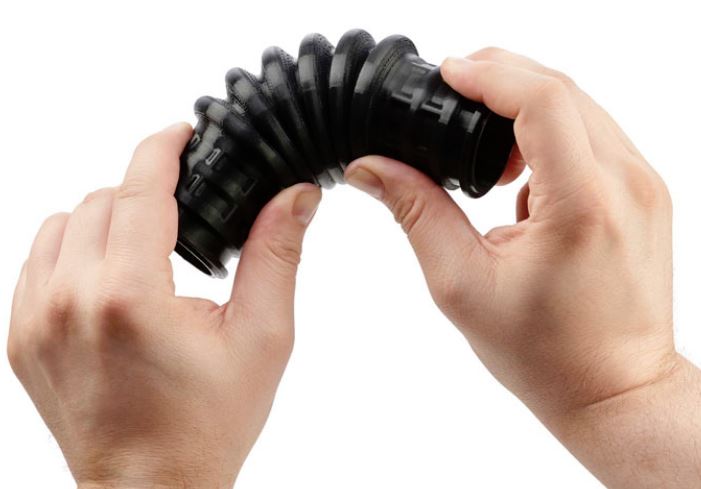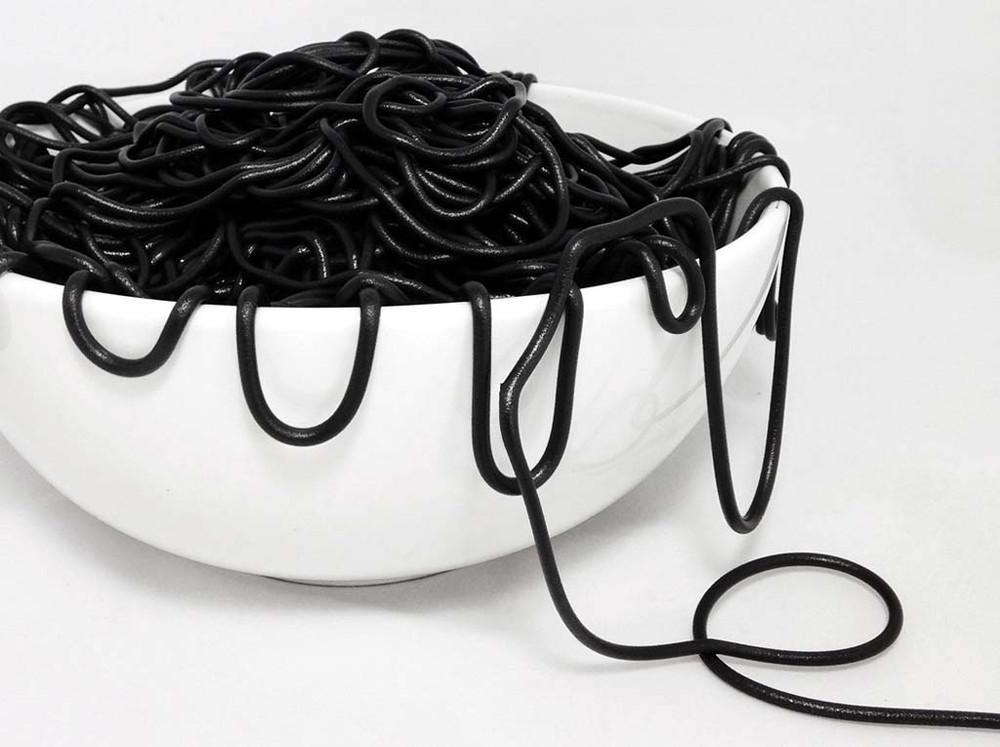The FDM 3D printer is usually a small-size of desktop machine, which looks like a game console. However, depending on the materials you adopt, FDM printed products can also be commercial and prevail in a lot of industries, like aviation, automobile, medical science, etc. This article will introduce several unconventional FDM filaments, hoping to help FDM users expand their applications.

TPE / TPU Flexible Material
TPU (Thermoplastic Polyurethane) is a soft but flexible material that is very suitable for parts that require rubber-like properties. It has great elasticity and can be repeatedly stretched, moved and impacted without abrasion or degradation.
In commercial applications, TPU is usually used in the field of automotive parts, medical supplies, and home appliances. It can be used to make seals, gaskets, soles, smartphone covers, wristbands, etc. Currently, designers also use it to print clothing.
However, this material is difficult to print, especially for remote 3D printers. It is difficult to control the advancement and retreat of the material, and the filament is easy to block the nozzle.

Carbon Fiber Reinforced Filament
Carbon fiber reinforced filament is improved on the basis of high-strength PLA, nylon and other polymers. It contains a large number of fine carbon fibers of varying lengths. These fibers are very small and can be extruded through the nozzle of an FDM 3D printer, and increase the strength and stiffness of the polymer, thereby effectively strengthening the 3D printed parts. The stiffness and strength are far more than ordinary PLA and ABS.
And it also has very high melt strength, high melt viscosity, good dimensional accuracy and stability, and low odor when printing.
However, although the material exhibits excellent performance, the abrasive nature of carbon fiber in the filament may cause accelerated wear of brass, so it is recommended to use stainless steel or hardened copper alloy nozzles.
Carbon fiber reinforced material can provide strength equivalent to that of metals and is very light. They have a wide range of applications in industries that need to consider the weight-to-strength ratio, including aerospace and automotive.

PEEK
PEEK is a semi-crystalline thermoplastic with high-temperature resistance, self-lubricity, chemical stability, radiation resistance and electrical properties, and excellent mechanical properties. It is considered to be one of the best engineering thermoplastics in the world.
PEEK can be used to make high-demanding applications in the aerospace, automotive, oil and gas, and medical industries. In the field of biomedicine, polyetheretherketone has excellent biocompatibility. Compared with implants made of metal materials, its elastic modulus is closer to human bones. It can meet the normal physiological needs of the human body so that orthopedic implants often adopt it.
PEEK can be used to manufacture mechanical parts and orthopedic implants. However, due to the high melting point of PEEK material, the working performance of most 3D printer nozzles is insufficient to melt PEEK material totally. This problem brings a lot of difficulties to PEEK 3D printing, especially FDM 3D printing.

Nylon Filament
Nylon has many advantages such as excellent toughness, abrasion resistance, and fatigue resistance, and is widely used in the industry.
FDM Nylon 12 is suitable for applications requiring high fatigue resistance, such as reusable friction-fit inserts. And Nylon 6 can accurately predict the performance of functional and durable prototypes and manufacturing tools that can withstand harsh production environments. Also, Nylon 6 can meet the high-performance requirements of low-volume production.
In the aerospace and automotive sectors, FDM-printed nylon can be used to make tools, fixtures, as well as prototypes for interior panels, low-heat air intake components, and radomes; in the development of consumer products, it can be used for snap-on panels and durable anti-impact components.

Metal Texture Filament
The metal texture filament is actually a material in which PLA or ABS is mixed with metal powder. After polishing the models, you can visually feel that these models are made of bronze, brass, aluminum or stainless steel.
These metal powders are mixed with PLA and ABS, and the filaments are much heavier than ordinary ABS and PLA, so they do not feel like plastic but more like metal.

FDM Conductive Filament
Conductive filaments can be used to make capacitive touchable sensors, sensors in wearable applications, and printed circuits. They are widely used in electronic devices while providing a high degree of freedom in customizing commercial products.
This material is often doped with carbon powder in conventional materials such as ABS to attain conductive properties. FDM printing circuits can be faster, safer, and cheaper than using etching and welding, while maintaining good uniformity and stable change rate during printing. However, there are currently only a little conductive filaments on the market.
Conclusion
3D printing technology has to compete with traditional manufacturing, and even FDM has to compete with other printing technologies. Composite materials will be one of the driving forces behind the mainstream, and equipment also matters.
The great enlightenment these materials have given us is the doping and recombination of them. Doping with several materials can achieve unexpected properties. Carbon fiber combined with PEEK and nylon materials can achieve the strength of metal, but it is lighter than metal, and it can actually replace metal in some fields. Graphene is added to the TPU and processed into conductive TPU filament, which can print flexible sensors, radio frequency shielding, flexible conductive circuits, and wearable electronics.